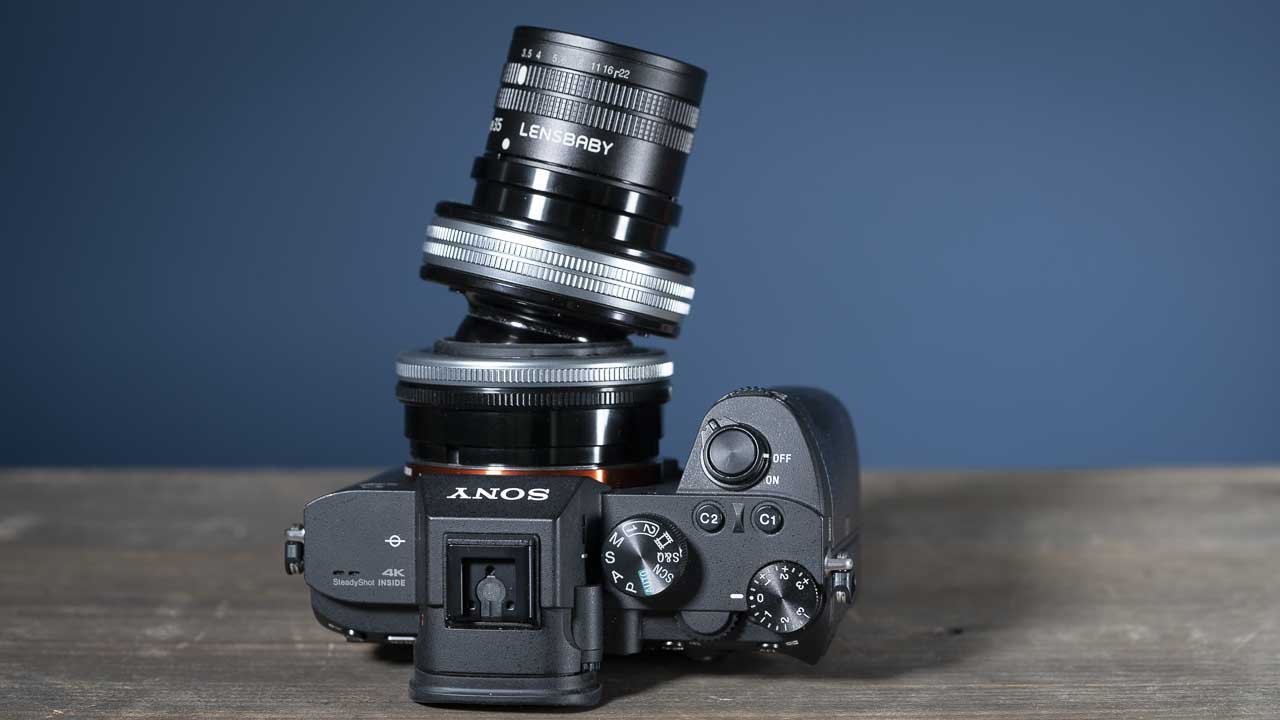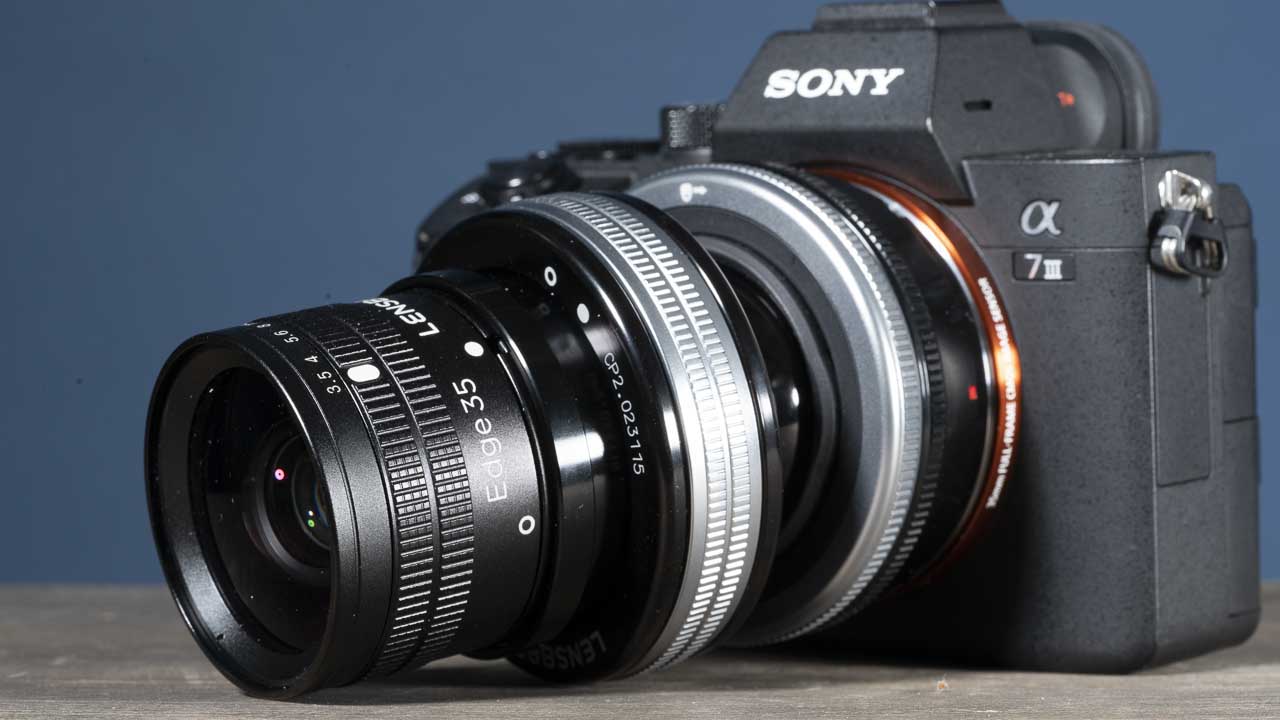Lensbaby makes a range of lenses for shooting with creative effects. The Edge 35’s effect is a slice of focus that you can swivel around to any angle. It’s a bit like a tilt-and-shift lens without the shift effect. The amount of blur either side of the slice of focus is determined by the focus distance and the selected aperture.
As the Edge 35 is part of Lensbaby’s Optic Swap System, it’s used with the Lensbaby Composer Pro II or the older Composer Pro lens housing. That’s great news if you already own a Composer Pro as the Edge 35 is available for £189 from Wex Photo Video or $249.95 from Adorama. However, you can also buy it as a kit with the Composer Pro II for £349 or $449.95.
The Composer Pro II is available in Canon EF, Nikon F, Fujifilm X, Sony E, Micro Four Thirds, Pentax, PL and Samsung NX mount and you can swap the optics between housings with different mounts. That means if you change your camera system, you don’t need to replace all your optics.
I shot with the Lensbaby Edge 35 on a Sony A7R III and a Fujifilm X-T2.

Specification
- Focal length: 35mm
- Maximum aperture: f/3.5
- Minimum focusing distance: 178.8mm or 7inches
- Format: Full-frame or smaller
- Focus: Manual
- Angle of tilt: 15°
- Aperture blades: 8
- Construction: 9 elements in 6 groups
- Dimensions: 63.5 x 80mm (2.5 x 3.1-inches)
- Weight: 453g (16oz)
The Composer Pro II has no electrical contacts, which means you need to set the camera to shoot without a lens before you can shoot with it. Once that’s done, you can usually shoot in aperture priority or manual exposure mode.
This also means that the lens is manual focus only. There’s a ring at the front of the Composer Pro II for focusing. In addition, the aperture is set using the ring around the Edge 35’s barrel.
What makes the Composer Pro II particularly unusual, however, is its ball and socket design. This enables any lens mounted in it to be tilted in any direction. That’s how the Edge 35’s slice of focus is moved around the frame.
Tilting the optic up or down creates a horizontal slice of focus and tilting to one side or the other creates a vertical slice. A diagonal tilt makes a diagonal slice.
Helpfully, there’s a ring close to the lens mount to loosen or tighten the tilting movement.

Build and Handling
When you pick up the Edge 35’s box, its weight gives you a sense of the optic’s quality. This is no plastic toy lens. And sure enough, the barrel is metal and the elements are glass. It has reassuring weight, feels solid and is well made.
It’s easy to fit the Edge 35 in the Composer Pro II. Simply rotate the Edge 35’s aperture ring to f/3.5 then align the optic’s aperture marker with the hollow dot on the Composer Pro II and rotate it clockwise towards the dot on the housing to lock it. To remove it again, hold the focus ring then rotate the aperture to f/22 and continue to turn to unlock the optic.
Two knurled bands give a good grip on the aperture ring, which occupies most of the barrel. There are aperture settings running from f/3.5 to f/22 and the mechanism feels smooth. The focusing mechanism of the Composer Pro II feels a little looser, but is fine.
As I mentioned earlier, the Lensbaby Composer Pro II + Edge 35 is a manual focus lens system. If you’re using them on a mirrorless camera, it’s well worth activating the focus peaking and to customising a button to magnify the viewfinder image. This makes it much easier to ensure the focus is perfect.
If you’re shooting on a DSLR you can focus manually as normal or use these focus assistants in live view mode.
The best way to use the Lensbaby Edge 35 is to compose the shot, decide on the angle of the tilt and then focus the lens. Finally, use the aperture ring to set the width of the sharp zone and the degree of blur. A wide aperture gives the most blur and the narrowest sharp band.

Performance
The Lensbaby Edge 35 produces some interesting and creative effects that are fun to explore. It takes a little while to get the hang of moving the tilting mechanism to position the band of focus where you want it, but it’s a simple process.
The most interesting results are created when the scene has lots of detail. If you use a horizontal slice of focus the Edge 35 creates images that look they were shot with a very wide aperture. However, you can also get near and far objects sharp in the same image.
It’s well worth focusing carefully because the Edge 35 is impressively sharp. That sharpness emphasises the degree of blur in other areas – and vice versa.
Lensbaby has used an 8-blade aperture in the Edge 35 and it produces attractive bokeh. This means that out of focus highlights in the background can really enhance the image.
Sample Images
Verdict
I enjoy the creativity of Lensbaby lenses and I like the Edge 35 a lot. However, there’s a bit more to think about than using the Sweet 35 which gives you spot of sharp focus. The Edge 35’s slice can cut across your images at any angle rather than just highlight the main subject.
The Edge 35 is suitable for all sorts of photography. I’ve mainly used it for landscapes, but it also works well for street and portraiture – especially environmental portraiture. I know professional wedding photographers who plan to use it in their work.
The first Lensbaby lenses predate mirrorless cameras, and although they work with DSLRs, they are particularly well-suited for use on compact system cameras. The ability to magnify the point of focus and use focus peaking makes it much easier to get the subject sharp.
Although Lensbaby lenses aren’t really aimed at pixel peepers, they’re about giving images a particular look, the Edge 35 gets the point of focus very sharp.


